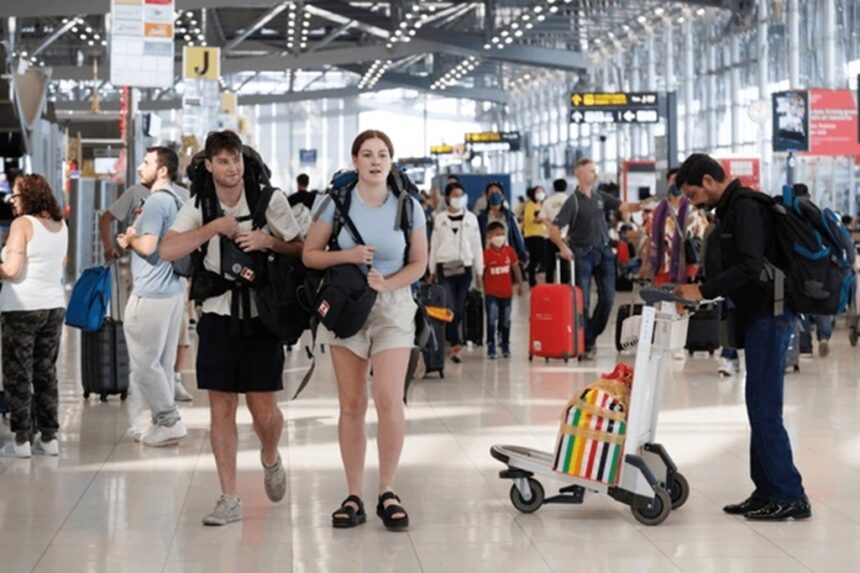BANGKOK – The Ministry of Tourism and Sports has reported foreign visitor numbers dropping by 6.56% between January and early August 2025, with just under 19.6 million international arrivals during this period, down from last year. This decline is notable as thailand continues to attract visitors from around the globe.
China still leads as the main source, with 2.73 million visitors, but numbers have fallen sharply. Due to these figures, the Finance Ministry has adjusted its prediction for 2025, lowering expected arrivals from 36.5 million to 34.5 million, impacting the overall tourism landscape in thailand.
This is a far cry from nearly 40 million just before COVID-19.
Northern Thailand has felt the drop most. Chiang Mai and Chiang Rai, usually popular with tourists, have seen fewer visitors. Frequent flooding has damaged roads and tourist spots, making travel difficult and leading many travellers to cancel trips.
Hotel occupancy in Chiang Mai sits at 59% compared to 72% last year. In Chiang Rai, many tourism businesses are dealing with lost bookings due to flood-related safety worries.
Somchai Poomlard, who runs tours in Chiang Rai, said, “The rain has made things very difficult. Tourists think twice when they hear about blocked roads and affected attractions.”
Fewer Tourists in Northern Thailand
Thailand’s economy relies heavily on tourism, which brings in about one-fifth of the national income. The Bank of Thailand noted a weaker economy in May 2025, with both tourism and manufacturing slowing down and only exports showing some improvement.
Public debt sits at 64.8% of GDP, still within the government’s target but highlighting the country’s economic limits. Meanwhile, household debt is climbing. Data shows families are under more pressure, with stagnant wages and daily expenses rising.
The Consumer Confidence Index fell from 55.4 in April to 54.2 in May, showing increasing worries across the country.
Dr. Pornchai Thiraveja of the Fiscal Policy Office said, “With less tourism income, businesses in the North are suffering. When household debt rises, families spend less, and that hurts the whole economy.” This pattern makes it even harder to break out of the cycle of weak spending and slow growth.
Chiang Mai and Chiang Rai, both famous for their traditions and natural sights, are struggling to win back tourists. Flooding has destroyed some popular attractions, and ongoing reports of scams and an earthquake in March have harmed the region’s image.
The local Tourism Confidence Index for Q2 2025 dropped to 70. Chiang Mai businesses report bookings are down 30% compared to last year, and homestays in Chiang Rai have reported even sharper declines.
Half-Price Travel Scheme
Nittaya Srisuk, who runs a guesthouse in Chiang Rai, told CTN News, “It’s hard for tourists to visit key sites since the flooding. We’re trying to recover, but ongoing news reports keep people away.” The Tourism Authority of Thailand has launched incentives like the “Half-Price Travel Scheme” to encourage Thais to travel during the rainy season.
Still, many local businesses say these steps do not go far enough to fix the larger issues of damaged roads and tourist safety.
The revised government forecast of 34.5 million foreign visitors this year reflects a more cautious outlook. Chinese arrivals alone dropped 34% in the first half of 2025, with safety fears and global tensions playing a part.
Neighbouring countries like Vietnam and Malaysia have already beaten their pre-COVID tourism numbers, drawing price-sensitive tourists away from Thailand.
Even with these hurdles, there are some positive signs. The Tourism Authority is reaching out to more countries and has seen visitor growth from Malaysia, Indonesia, and European countries.
Planned 300-Baht Tourist Fee
The start of the Thailand Digital Arrival Card in May 2025 is meant to make entry easier, which could help numbers recover. Major events like the FIVB Women’s World Championship, hosted in several Thai cities, are set to attract global attention later this year.
Looking forward, the tourism sector is at a key point. The government has delayed the planned 300-baht entry fee for tourists until mid-2026 to support visitor numbers. New campaigns like “Amazing Thailand Grand Tourism & Sports Year 2025” are highlighting sustainable travel.
Still, building back trust, fixing roads and attractions damaged by flooding, and easing household debt will be important for a full recovery.
Despite the setbacks, Thailand’s appeal and the warm welcome from its people remain strong. Tourism Minister Sorawong Thienthong said, “Thailand is still the Land of Smiles.
We’re working hard so visitors feel safe and valued.” The road ahead is uncertain, but the country’s culture and spirit could bring travellers back in time.














